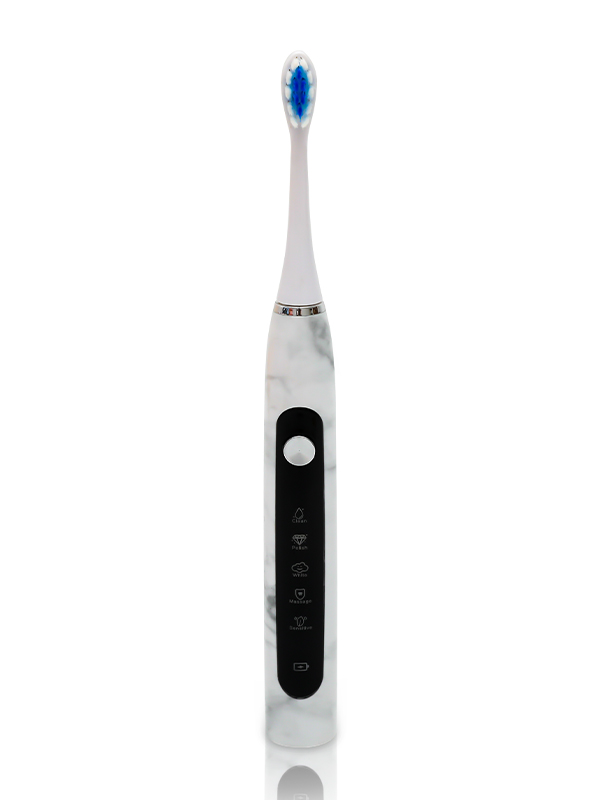The maintenance and cleaning of your electric toothbrush is very important to ensure its proper function and prolong its service life.
Clean the brush head after daily use: After using an electric toothbrush, the brush head should be removed from the toothbrush and rinsed with clean water. Make sure there is no toothpaste, food residue or saliva on the bristles. Avoid water entering the body part of the electric toothbrush.
Replace brush heads regularly: Electric toothbrush heads need to be replaced regularly, usually every 3 months or when the bristles start to become worn. Worn bristles not only clean less effectively, but can also damage your gums and teeth.
Avoid wet body: The body part of an electric toothbrush should generally not be soaked in water or exposed to moisture for a long time, which may damage the circuit and battery. When cleaning the brush head, avoid letting water droplets enter the body part.
Watch out for battery maintenance: If your electric toothbrush is battery-operated, replace the batteries regularly, following the directions provided by the manufacturer. Use the battery type and size recommended by the manufacturer.
Don't push too hard: When using an Adult Electric Toothbrushes, you don't need to brush your teeth as hard as you would with a regular toothbrush. Let the vibrating or rotating action of your electric toothbrush do the cleaning, as excessive force can damage tooth enamel and gums.
Proper storage: When the electric toothbrush is not in use, it should be placed in a dry and ventilated place, avoiding direct sunlight. If your electric toothbrush comes with a case, it's best to use the case when storing it.
Follow the instructions for use: Read the instruction manual of your electric toothbrush carefully before use to learn how to use, maintain and clean it properly. Different makes and models of electric toothbrushes may have different maintenance needs.
DY-603C personalize one-click conversion electric toothbrush
The DY-603C personalize one-click conversion electric toothbrush can be programmed to adjust their speed, intensity, and brushing patterns according to individual user preferences. This ensures a more tailored and comfortable brushing experience, accommodating sensitive teeth or gums.
Personalized settings can help users achieve optimal cleaning by adapting to their specific oral health needs. For instance, those with braces, crowns, or other dental work might require different brushing intensities and techniques.

 En
En  English
English 中文简体
中文简体 日本語
日本語 한국어
한국어













 Mar.26 2025
Mar.26 2025










